
The shot put is a track and field event involving "putting" (throwing) a heavy spherical ball—the shot—as far as possible. For men, the sport has been a part of the modern Olympics since their revival (1896), and women's competition began in 1948.

Weightlifting is a sport in which athletes compete in lifting a barbell loaded with weight plates from the ground to overhead, with the aim of successfully lifting the heaviest weights. Athletes compete in two specific ways of lifting the barbell overhead. The snatch is a wide-grip lift, in which the weighted barbell is lifted overhead in one motion. The clean and jerk is a combination lift, in which the weight is first taken from the ground to the front of the shoulders, and then from the shoulders to over the head. The sport formerly included a third lift/event known as clean and press.

The hammer throw is one of the four throwing events in regular outdoor track and field competitions, along with the discus throw, shot put and javelin.

The caber toss is a traditional Scottish athletic event in which competitors toss a large tapered pole called a "caber" (/ˈkeɪbər/). It is normally practised at the Scottish Highland Games. In Scotland, the caber is usually made from a larch tree, and it can be between 16–20 feet tall and weigh 90–150 pounds. The term "caber" derives from the Gaelic word cabar, which refers to a wooden beam.

Highland games are events held in spring and summer in Scotland and other countries with a large Scottish diaspora, as a way of celebrating Scottish and Celtic culture, especially that of the Scottish Highlands. Certain aspects of the games are so well known as to have become emblematic of Scotland, such as the bagpipes, the kilt, and the heavy events, especially the caber toss and weight over bar. While centred on competitions in piping and drumming, dancing, and Scottish heavy athletics, the games also include entertainment and exhibits related to other aspects of Scottish and Gaelic cultures.

Strength athletics, also known as Strongman competitions, is a sport which tests competitors' strength in a variety of non-traditional ways. Some of the disciplines are similar to those in powerlifting and some powerlifters have also successfully competed in strongman competitions. However, strongman events also test physical endurance to a degree not found in powerlifting or other strength-based sports, such as carrying refrigerators, flipping truck tires, and pulling vehicles with a rope.
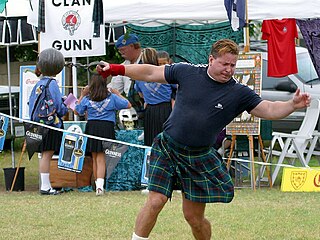
Two sports have events that fall under the name of weight throw one being the track and field event and the other being the Scottish highland games events.
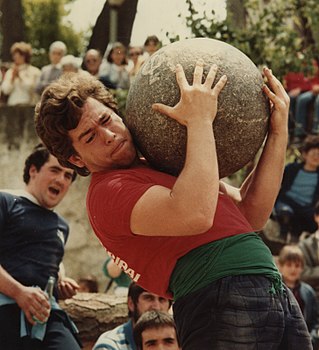
Lifting stones are heavy natural stones which people are challenged to lift, proving their strength. They are common throughout Northern Europe, particularly Iceland, Ireland, Scotland, Basque Country, Faroe Islands, Wales, North West England centred around Cumbria, Switzerland, Germany and also in the United States and parts of Asia such as Japan.
Keg-tossing is a sport that involves the heaving of a standard 15.5 gallon beer keg. Most people would refer to this type of keg as a "half-keg" or "half-barrel." The keg must be completely emptied before it should be tossed to avoid injuries. There are many different types of keg-tossing, as it is practiced throughout the world. In Ireland, the keg is typically thrown over upwards and the height of the toss determines the winner.
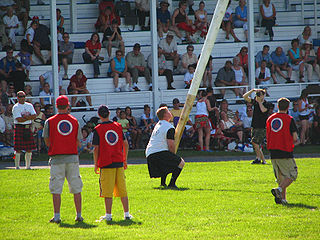
The Glengarry Highland Games consist of a series of traditional Scottish competitions held annually in Maxville, Ontario, Canada, usually held the first weekend in August. The games span two days and with an attendance of over 20,000, are the largest Highland Games outside of Scotland. The Glengarry Highland Games are primarily intended to be a showcase of traditional Scottish heavy events, Highland Dance, pipe and drum competitions.
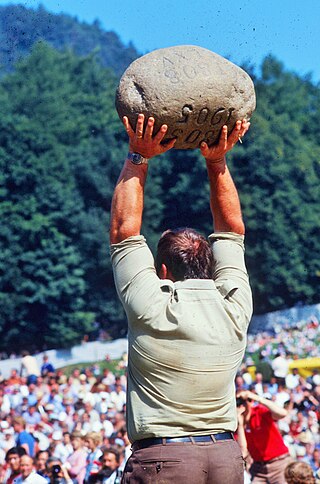
Steinstossen is the Swiss variant of stone put, of throwing a heavy stone overhead for the longest distance. Practiced among the alpine population since prehistoric times, it is recorded to have taken place in Basel in the 13th century. During the 15th century, it is frequently recorded to have been practiced alongside the Schützenfeste of the Old Swiss Confederacy. It is also central to the Unspunnenfest, a festival inaugurated in 1805 in Interlaken near the old ruins of Unspunnen Castle in the Bernese Alps, and held once every twelve years.

The Kentucky Scottish Weekend was a regional Highland games event held annually at General Butler State Resort Park in Carrollton, Kentucky. The weekend's mission was to celebrate the customs and traditions of Scotland. It was held each year on the second full weekend in May. First held in 1983, the weekend celebrated its thirtieth anniversary in 2012, its final year. It was the longest running highland game currently being held in Kentucky at the time it ended. It was held in Carrollton due to that location being nearly halfway between Louisville and Cincinnati. A Kentucky non-profit corporation—Kentucky Scottish Weekend, Inc.—held the event. The weekend was sometimes referred to as "KSW" for short.
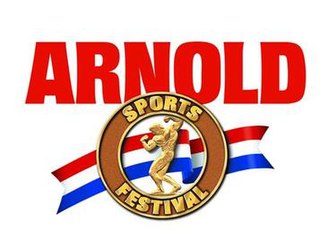
The Arnold Strongman Classic is an annual competition featuring strength athletes from all over the world, determining who is the Strongest Man in the World. Created by Arnold Schwarzenegger, Jim Lorimer and Terry Todd, it is an offshoot of the Arnold Sports Festival which takes place annually in Columbus, Ohio, USA.

The Highlander Challenge World Championships is a tournament that marries traditional Highland games with more contemporary strength athletics. It was created to help reinvigorate Highland games in Scotland by giving a modern and aspirational image while maintaining the tradition inherent in the history of the sport.
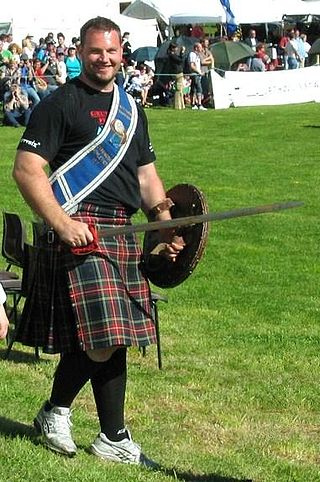
Gregor Edmunds is a Scottish Highland Games competitor and strongman. Gregor is a winner of the World Highland Games Championships, world record holder in Highland games throwing the 28lb weight 95’10.5" Highlander Challenge, and Scotland's Strongest Man.

Brian Shaw is an American retired professional strongman who is widely regarded as one of the greatest strength athletes of all-time. He won the 2011, 2013, 2015, and 2016 World's Strongest Man, making him one of only five men to win the World’s Strongest Man four times or more. In 2011, Shaw became the first man to win the Arnold Strongman Classic and the World's Strongest Man competitions in the same calendar year, a feat he replicated in 2015. With 27 international competition wins, he is the fourth most decorated strongman in history behind Lithuania's Žydrūnas Savickas, Poland's Mariusz Pudzianowski and Iceland's Hafþór Júlíus Björnsson.
Andrés Guðmundsson is an Icelandic Strongman and Highland Games competitor. He held the titles of the World Strongman Challenge and the European Hercules.
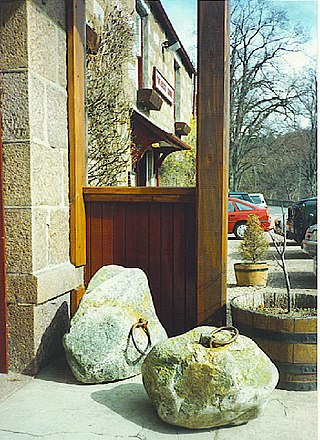
The Dinnie Stones are a pair of Scottish lifting stones located in Potarch, Aberdeenshire. They were made famous by strongman Donald Dinnie, who reportedly carried the stones barehanded across the width of the Potarch Bridge, a distance of 17 ft 1+1⁄2 in (5.22 m), in 1860. They remain in use as lifting stones.

Physical training has been present in human societies throughout history. Usually, it was performed for the purposes of preparing for physical competition or display, improving physical, emotional and mental health, and looking attractive. It took a variety of different forms but quick dynamic exercises were favoured over slow or more static ones. For example, running, jumping, wrestling, gymnastics and throwing heavy stones are mentioned frequently in historical sources and emphasised as being highly effective training methods. Notably, they are also forms of exercise which are readily achievable for most people to some extent or another.

Douglas Morris Edmunds was a Scottish Highland Games competitor and strongman. Known as the "Godfather of Strongman", he was a two-time world champion of the caber toss and co-founded and acted as referee for the World's Strongest Man competition. He was also a co-founder of the International Federation of Strength Athletes and Highlander Challenge World Championships. He was the father of strongman Gregor Edmunds.























